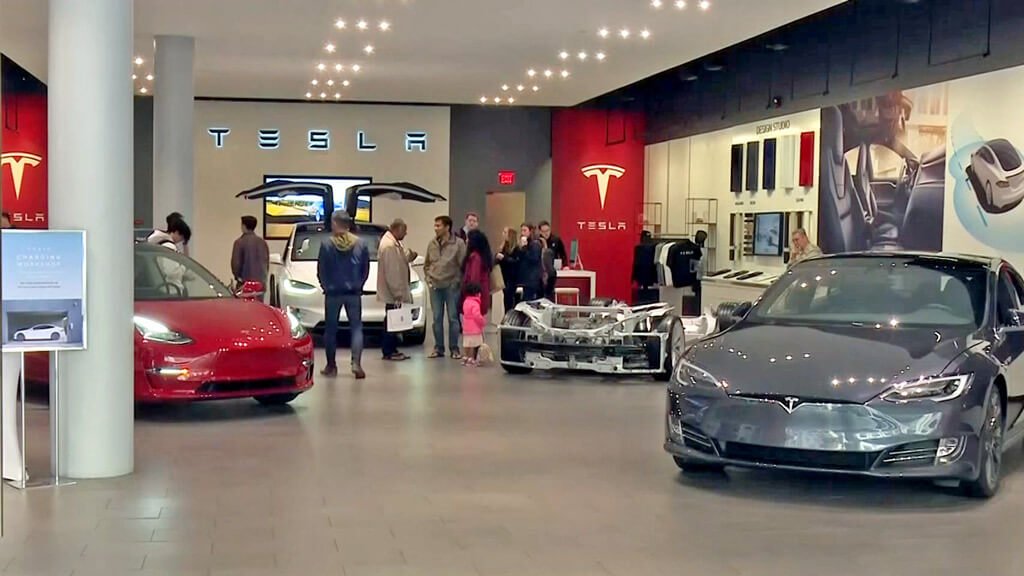Tesla’s unprecedented rise in the automobile industry remains a surprise to most people. For some, it’s because they built a revolutionary product, while for others, it’s because of Tesla’s customer relationship management software. We’ll find out the secret behind Tesla CRM.
According to Consumer Reports, Tesla has the highest customer satisfaction rate in the car manufacturing industry. And on top of that, 91% of Tesla owners are more likely to rave about their vehicles than other brands. This is an admirable and incredible feat for a less than a two-decades-old company.
Just like Apple, Tesla users have a strong affinity with the brand. They are vocal about it and are quick to boast about it. What is Telsa’s recipe for outstanding customer relationship management? How were they able to get the loyalty of their customers? We’ll answer these questions and many others in this Tesla CRM case study.
“We could make a flying car – but that’s not the hard part. The hard part is, how do you make a flying car that’s super safe and quiet? Because if it’s a howler, you’re going to make people very unhappy.” – Elon Musk
The Best Overall
Pipedrive
A sales-focused CRM that leverages AI to automate sales, lead & demand generation.
Best Budget Choice
Freshsales
Freshsales automates your sales process, and helps drives sustainable business growth.
Best for Workflows
Zendesk
Customize your workflows to track all aspects of the sales cycle, from lead gen to post-sale support.
Tesla Timeline
Tesla is founded
Elon Musk injects $13 million
Series C, $40 million funding
Model S is announced
Tesla raises $40 million in debt financing
Strategic partnership with Daimler AG
Tesla goes IPO at $17 per share
Tesla factory opens in Fremont, CA
Model X is revealed
Tesla announces battery swap station
Tesla open-sources its patents
Autopilot introduced for Model S
Tesla ranked as the #1 American car brand
Tesla Motors renamed to Telsa Inc.
The SpaceX Falcon Heavy launches
Tesla launches The CyberTruck
Tesla became the most financially valuable US Carmaker

Tesla & SalesForce CRM
Tesla has a long-standing business relationship with Salesforce, as they’ve been using Salesforce CRM for a while. Not until recently that Tesla decided to move on by developing its own Proprietary CRM software.
“Tesla’s decision to develop its own CRM system aligns with its desire for vertical integration and continues a trend toward making its own software for internal functions rather than using third-party systems,” said a Tesla Top Executive. One of the reasons for this move is to own their data without any external interference.
Tesla is not the only tech giant to make this move. The likes of Apple, Amazon, and Uber are already using their custom-built CRM to drive sales and customer engagement. Developing their CRM solution in-house would give Tesla the flexibility to experiment with different features and solutions.
Tesla CRM Strategy: 4 Ways Tesla Uses Customer Relationship Management (CRM)
1. User-Centric Design
Peter Drucker said, “The aim of marketing is to know and understand the customer so well the product/service fits him and sells itself.” Tesla is one of the few carmakers who truly understand who their customers are as individuals and as a whole. They outspend their competitors in Research and Development (R&D).

According to the chart above, the firm spends $2984 on R&D per car produced. That’s thrice the industry average of roughly $1,000 per car and higher than the collective R&D budgets of Ford, GM, and Chrysler per car. Tesla’s unparalleled understanding of its customer is reflected in its cars’ user-centric design and personalization. Asides from their investment in R&D, Tesla collects data and numerous sensors from active users of their vehicles. This data helps Tesla enhance its self-driving technology and better understand how users interact with their cars.
2. Personalized Driver Profiles
Tesla’s Driver Profiles reflect its enormous commitment to giving users a wholesome driving experience. The hallmark of its car personalization feature is the structure of the seat position. Unlike other cars, every new driver must manually arrange the seat position to suit their size and height. Tesla is built differently.

With Tesla, every new driver can create a “New Driver” profile in the car. This profile customizes the position of their seat, suspension, braking, mirrors, steering wheel, and some other features. For instance, if you share the car with your spouse or siblings, each user can create a unique driver profile in the vehicle. The seat position customization feature gives users a sense of belonging, pride, and ownership. That feeling is priceless. “When you can touch someone’s heart, that’s limitless,” said Steve Jobs.
3. Engaging With Customers
Many car manufacturers sell their cars through third-party dealerships and partners, but Tesla chooses a different approach. Telsa opened exotic stores in multiple locations and sells directly to their customers. They believe most traditional car dealers cannot accurately present the cars and amplify their benefits.

Tesla’s CRM strategy of selling directly to customers helps them own the entire sales process. And on top of that, it helps them engage in real-time with their customers, listen to their concerns and excitement, and draw valuable insights from them.
4. Dynamic Personalization
Elon Musk, the Tesla CEO, said, “You’ll probably want dynamic personalization, so it’s like you step into the car, it knows who you are, it knows everything you want, and the car reconfigures itself automatically to all your preferences. So you could step into any car, and that’s how it would be.”
With its dynamic personalization feature, Tesla is revolutionizing the automobile industry and forging a path for others to follow. Their vehicles have an upgradable dashboard that evolves drivers’ experience as the software improves.
Tesla sends periodic updates to their cars. Each update is like a layer that seeks to offer personalized experiences that delight its users. Indeed, Tesla’s CRM strategy is worthy of emulation.
Conclusions
There’s so much that businesses take away from Tesla’s CRM strategy. However, two points stand out. First, brands should know and understand their customers. We can see this play in Tesla’s heavy investment in R&D and in-store customer engagement. Even though you can’t afford billions of dollars in R&D, at least you can start with running a customer survey to know your customers.
The second way Tesla CRM stood out is through its personalization features. Everything is personalized, from their vehicle’s door handle to the driver’s sitting position to give users a 360% experience when using the cars. To delight your customers, you can start by offering email personalization using CRM software like Pipedrive, Freshsales, or Zoho.
Frequently Asked Questions
Tesla uses its own in-house proprietary CRM. They recently switched from using SalesForce CRM to developing their own.
A CRM Strategy determines how a company plans to generate leads, acquire, retain, and establish quality customer relationships. Getting CRM software is the first step; having a plan is the second and primary step for business growth.
Telsa leverages the word-of-mouth marketing strategy. It’s the reason they created their Referral Program to encourage people to tell their friends and associates about Telsa and be rewarded for it.
Tesla continues to support customers post-purchase with innovative solutions like mobile service repairs and overnight software updates. These services allow for most repairs to be completed outside of service centers, offering greater convenience and boosting overall customer satisfaction.
































